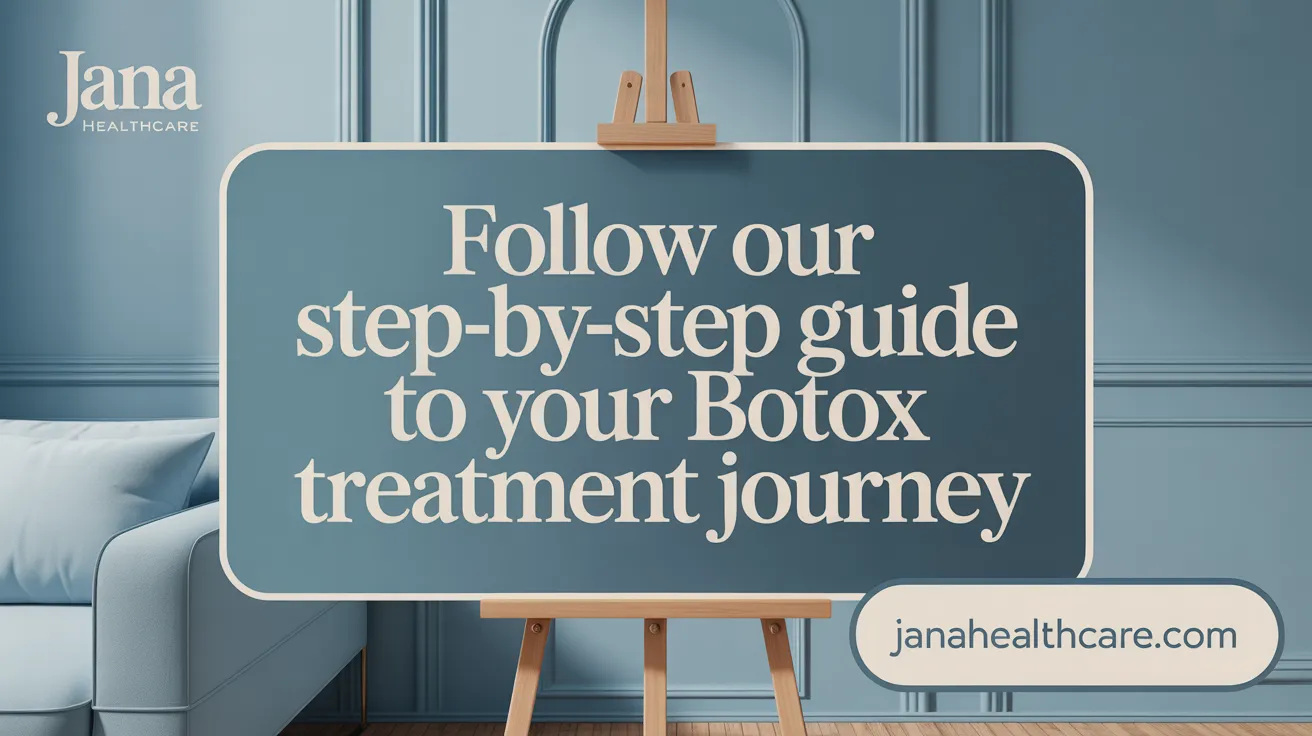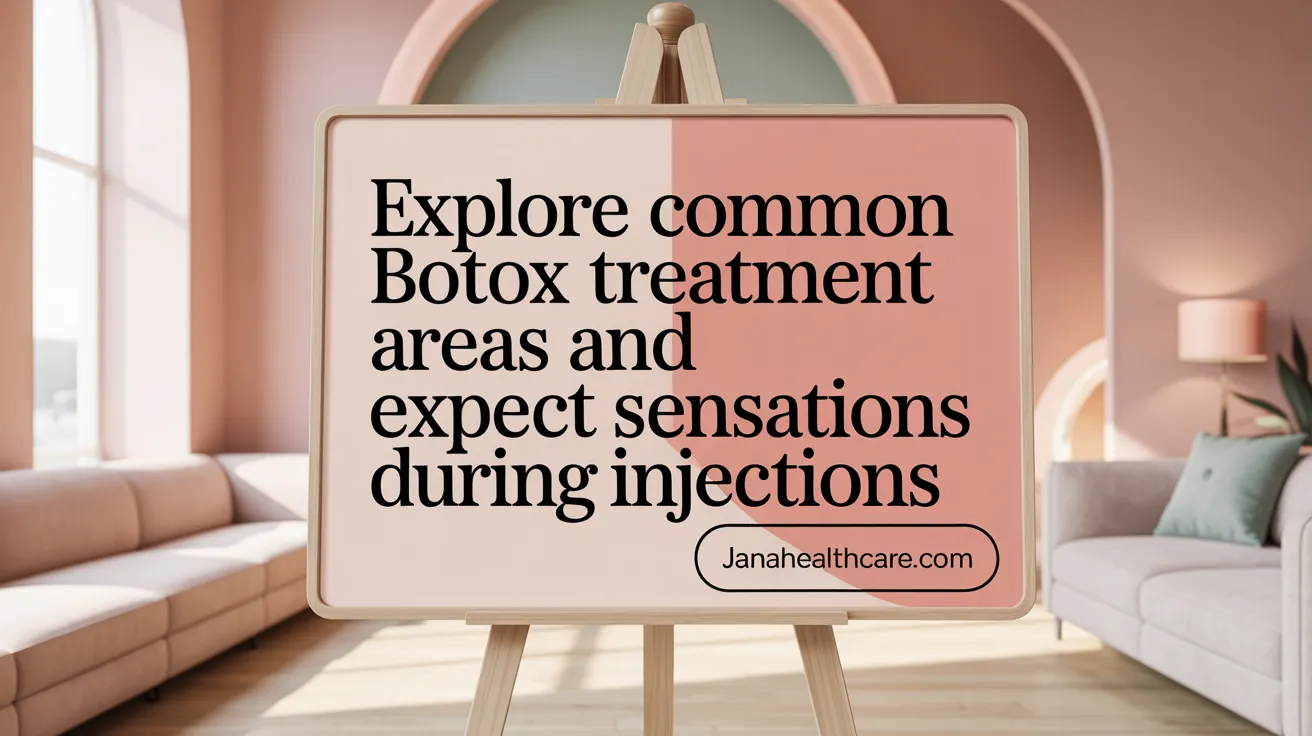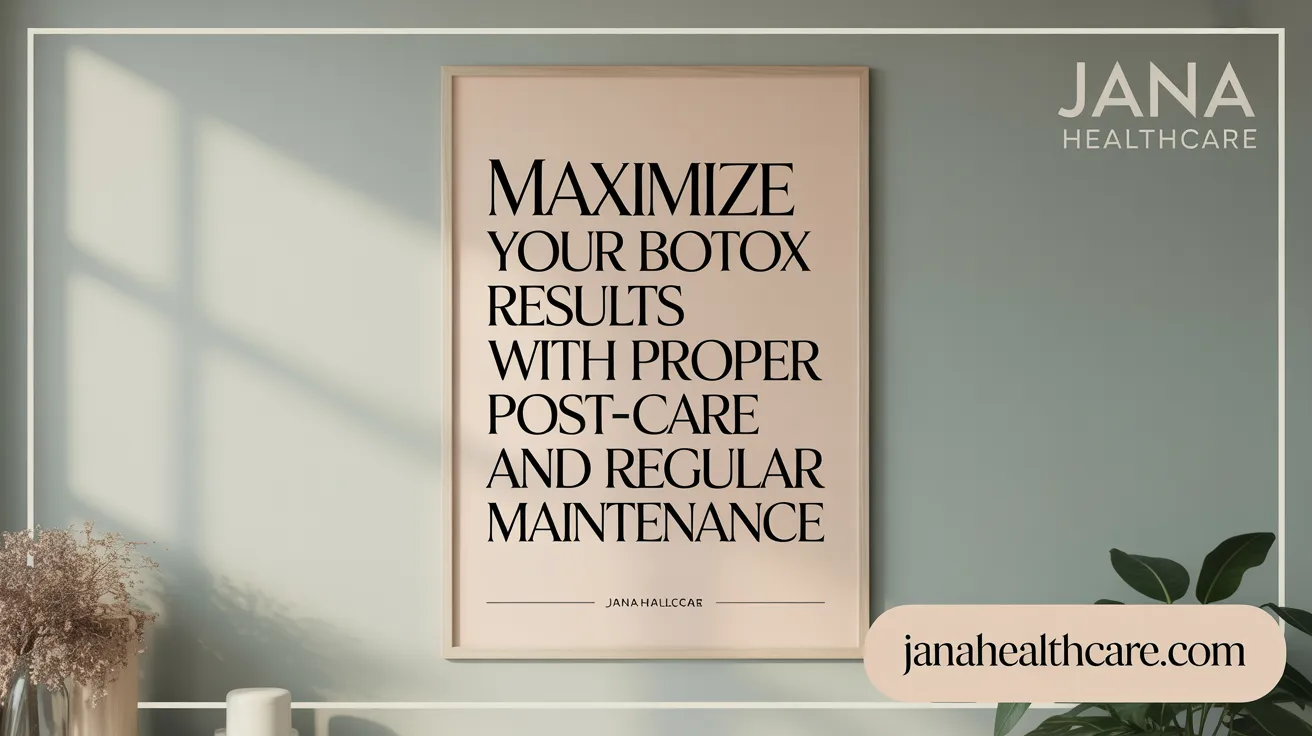Understanding Botox and Its Role in Aesthetic and Medical Treatments
Botox has become a household name for those seeking to reduce wrinkles and address certain medical conditions non-surgically. Derived from botulinum toxin, Botox works by temporarily relaxing muscles to smooth fine lines and wrinkles or relieve other health issues. This guide outlines everything you need to know about your first Botox appointment, from preparation and procedure to expected results and safety measures, helping you approach your treatment informed and confident.
What Is Botox and How Does It Work?

What is Botox and how does it work?
Botox is a neurotoxin derived from the bacterium Clostridium botulinum. Originally known for its role in causing botulism in large amounts, in controlled, small doses, it has become a popular treatment in both cosmetic and medical fields.
The way Botox functions is by targeting the neuromuscular junction — the connection point between nerve cells and muscles. It binds specifically to presynaptic nerve terminals and gets internalized into the nerve cells. Once inside, its light chain cleaves SNARE proteins like SNAP-25, which are crucial for the release of the neurotransmitter acetylcholine.
By disrupting this process, Botox blocks nerve signals that would normally cause muscle contraction. As a result, the targeted muscles become temporarily paralyzed or relax, which diminishes the appearance of wrinkles caused by muscle movements. This effect typically lasts for about three to four months, after which nerve endings recover, and muscle activity gradually resumes.
Beyond its cosmetic benefits, Botox also impacts sensory pathways and autonomic functions. This allows it to be used in treating conditions such as hyperhidrosis (excessive sweating), chronic migraines, overactive bladder, and certain muscle spasm disorders. Its ability to safely inhibit nerve signals for an extended period makes it a versatile therapeutic agent.
In summary, Botox works by blocking nerve signals at the nerve-muscle interface, leading to muscle relaxation that smooths out wrinkles and alleviates various medical conditions. The effects are temporary, with nerve regeneration restoring activity over time. For more detailed information, see Botox injections and Botulinum toxin injection.
Preparing for Your First Botox Appointment: Essential Guidelines
 When planning to undergo Botox for the first time, proper preparation can significantly influence the results and your overall experience.
When planning to undergo Botox for the first time, proper preparation can significantly influence the results and your overall experience.
Pre-procedure restrictions for medications and substances are vital to minimize risks. Patients should avoid alcohol, blood-thinning medications like aspirin, ibuprofen, and supplements such as fish oil and vitamin E for at least 24 hours before treatment. Additionally, stopping NSAIDs and avoiding caffeine can help reduce the likelihood of bruising. Discontinuing Retin-A (tretinoin) two days prior and two days after the procedure is also recommended.
Hydration plays a crucial role; staying well-hydrated before your appointment can help improve skin elasticity and reduce bruising risk. Strenuous activities should be avoided for at least six hours after the treatment to prevent toxin migration and to ensure optimal results.
The importance of discussing your medical history and goals cannot be overstated. During your consultation, a qualified healthcare provider will review your medical history, allergies, and current medications. Clarifying your aesthetic goals allows for a tailored treatment plan that aligns with your expectations, ensuring a natural look and safe procedure. For detailed information, see First-Time Botox Guide and Botox consultation process.
Scheduling timing relative to events is strategic. Booking your Botox appointment at least four weeks before any significant events ensures sufficient time for swelling to subside and full results to manifest, which usually takes approximately 4 to 7 days. Refer to Timeline for Botox Results and Duration of Botox Effects for timelines and duration.
Skin and facial preparation on the appointment day includes thoroughly cleansing the face to remove makeup or skincare products. Some clinics may apply a numbing cream or use ice to decrease discomfort during injections, especially for sensitive areas. For more, see Botox injection procedure and anesthesia and Use of numbing agents in Botox.
Initial consultation elements involve discussing treatment areas, understanding the process, and setting realistic expectations. This step guarantees you are informed about potential side effects, recovery time, and maintenance plans. Following these guidelines helps maximize the safety, comfort, and effectiveness of your first Botox experience. Review Botox treatment process and Botox safety and side effects for a comprehensive overview.
Step-by-Step Botox Treatment Procedure Explained

Consultation and assessment
The first step in the Botox treatment process is scheduling a consultation with a qualified healthcare provider. During this session, the provider will review your medical history, discuss your aesthetic goals, and evaluate your facial anatomy. This assessment helps determine if Botox is suitable for you and identifies the specific areas to be treated. The provider might also show before-and-after photos to help set realistic expectations.
Determining injection sites and doses
Based on the assessment, the provider will carefully mark the injection sites on your face, typically using a skin-safe marker. These points correspond to muscles responsible for wrinkle formation, such as the forehead, between the eyebrows, or around the eyes. The number of units and injection points are individualized, often ranging from 10 to 30 units depending on the area and desired effect. Proper site selection ensures natural-looking results while minimizing risks.
Numbing and skin preparation
To enhance comfort during the procedure, a topical numbing cream or ice may be applied to the skin for about 15 minutes. This numbing helps reduce any minor discomfort from the injections. The skin is then cleaned thoroughly with an antiseptic solution to prevent infection. In some cases, the provider may draw small markings on the skin to guide precise injections, especially for first-time patients. This preparation is part of the Botox injection procedure.
Injection technique and duration
Using a very fine needle, the healthcare professional injects small amounts of botulinum toxin into the targeted muscles. The injections are quick and typically last less than 15 minutes. During the procedure, you might feel a brief pinch or stinging sensation. The injector aims for accuracy to ensure the toxin relaxes only the intended muscles, maintaining natural facial expressions. Most patients report minimal discomfort, and the procedure is often described as swift and straightforward. Details of this can be found in the Botox injection techniques guide.
Post-procedure instructions and follow-up planning
After the injections, the provider will give you specific post-treatment guidelines. You should avoid rubbing or massaging the treated areas for at least 12-24 hours to prevent the toxin from spreading undesirably. Strenuous activity should be avoided for a few hours, and upright posture is recommended for the first few hours. Results usually start to become visible within 3-5 days, with full effects appearing in about two weeks. Follow-up appointments are often scheduled to evaluate the outcome and plan any additional treatments needed for optimal, natural-looking results. Regular treatments every 3-4 months can help maintain the effects and improve muscle responsiveness over time, as explained in the Botox results timeline.
Common Treatment Areas and What to Expect Sensation-wise

What are the common areas of the face treated with Botox?
Botox is frequently used to address a variety of facial concerns, primarily targeting dynamic wrinkles caused by muscle movement. Common areas include the forehead to smooth horizontal lines, the glabellar region (the vertical lines or frown lines between the eyebrows), and the crow’s feet around the eyes. It is also used to improve the appearance of bunny lines on the nose, the chin (to reduce a dimpled chin or 'pebbled' look), and smile lines that run along the sides of the mouth.
In addition, Botox injections can be injected into muscles such as the mentalis to enhance chin shape and into the masseter muscles for jaw slimming. Beyond purely cosmetic uses, Botox also treats medical conditions like hyperhidrosis (excessive sweating) in the underarms or palms, and neck bands, making it a versatile treatment for both aesthetic and therapeutic goals.
Understanding these common treatment areas helps patients anticipate where their injections will be placed and how these areas influence facial expressions and appearance.
What sensations and experience can a patient expect during a Botox procedure?
During a typical Botox treatment process, most patients describe feeling only mild discomfort. The injection involves tiny needles, similar to those used for insulin shots, causing a quick pinch or sting that lasts only a second or two.
Immediately after the injections, it is common to notice slight residual stinging or a mild, brief burning sensation. Some individuals may see small bumps or redness at the injection sites, which generally fade rapidly, often within a few hours. Bruising is also possible but tends to be minimal if precautions such as avoiding blood thinners before Botox are followed.
Patients might experience a sensation of heaviness, tightness, or slight swelling in the treated areas, but these sensations are temporary and typically resolve within a week. Many report that the overall experience is well-tolerated, with most discomfort limited to the moment of injection. Topical numbing creams or ice can be used to further minimize any discomfort.
In summary, while sensations vary individually, most find Botox procedures to be quick and relatively painless, with only short-lived effects during and immediately after the injections.
Post-Treatment Care, Results Timeline, and Maintenance Scheduling

What post-treatment care and instructions should patients follow after Botox?
After a Botox session, it is important to adhere to specific aftercare practices to optimize results and minimize side effects. Patients should avoid rubbing, massaging, or applying vigorous facial movements to the treated areas for at least 12 to 24 hours. This precaution helps prevent the toxin from spreading to unintended muscles, which could lead to undesired effects such as drooping eyelids or asymmetry.
Staying upright for 4 to 6 hours post-injection is recommended to reduce the risk of Botox migration. Applying a cool compress can help soothe mild swelling, bruising, or soreness. Patients are usually able to resume their normal activities immediately, but should steer clear of strenuous exercise, hot baths, saunas, or exposure to excessive heat for at least 24 hours. This reduces the likelihood of bruising and swelling.
It’s essential to follow any additional instructions from the healthcare professional, including avoiding blood thinners and alcohol beforehand, to minimize bruising and bleeding risks. Regular follow-up appointments are vital for evaluating results and deciding on further treatments, with effects typically becoming noticeable within a week and lasting approximately 3 to 4 months.
When can patients expect to see results, and how long do Botox effects usually last?
Most patients begin to notice changes within 3 to 5 days after treatment. The most significant results are usually seen around one week, with full benefits plateauing at about two weeks—when the muscles have fully relaxed, and wrinkles are visibly smoothed.
Generally, the effects of Botox last about 3 to 4 months. As the muscle activity gradually returns, wrinkles tend to reappear, signaling when additional treatments may be necessary. To sustain a youthful appearance, repetition of injections every 3 to 4 months is recommended. Patience is needed during this period, as the full effects develop gradually and are most natural-looking two weeks after the procedure.
How should one schedule Botox treatments and what is the typical timeline for maintenance?
Scheduling regular treatments every 3 to 4 months helps maintain optimal results and prolongs the youthful appearance achieved by Botox. The metabolism of the toxin varies per individual, influencing how long effects last. For some, the wrinkle-relaxing effect may diminish sooner, especially in areas with stronger muscles or faster metabolism.
Patients should watch for early signs of wrinkle reappearance and plan follow-ups accordingly. Consistent treatments over time can lead to longer-lasting results, as repeated injections may weaken muscles and reduce their ability to contract. Many patients find that with regular sessions, the amount of Botox needed decreases over time, and the duration of effect extends.
Ultimately, working closely with a qualified healthcare provider enables personalized treatment scheduling, ensuring results are maintained and side effects minimized. Proper timing and repeated treatments create a natural, refreshed look that aligns with each individual’s aesthetic goals.
This strategic approach to schedule management maximizes the longevity of Botox benefits, supporting ongoing skin rejuvenation and wrinkle prevention.
Safety, Side Effects, and Choosing a Qualified Provider
What are the possible side effects and risks associated with Botox treatment?
Botox treatment is generally considered safe when performed by experienced medical professionals. Most common side effects include mild bruising, swelling, redness, and temporary headaches, which typically resolve quickly. However, more serious but rare complications can occur. These include unintended muscle weakness, drooping eyelids (ptosis), eye irritation, dry eyes, or allergic reactions. If the toxin spreads to surrounding areas, it can cause symptoms like difficulty swallowing, breathing problems, or muscle weakness, requiring urgent medical care. Minor side effects such as pain at the injection site or flu-like symptoms may also happen temporarily. To minimize these risks, patients should share their full medical history with their provider, avoid blood thinners and alcohol before treatment (Avoid Blood Thinners Before Botox), and strictly follow post-treatment care instructions, such as not rubbing the treated area or lying down immediately after injections (Post-Treatment Care After Botox).
What safety considerations should patients keep in mind and how to ensure providers are qualified?
Ensuring a safe Botox experience starts with selecting a licensed, well-trained healthcare professional. Ideal providers include medical doctors (MDs or DOs), nurse practitioners (NPs), registered nurses (RNs), physician assistants (PAs), or dentists with specialized certification in facial aesthetics and Botox procedures (Choosing a reputable Botox provider). Patients should inquire about their provider’s training, asking if they have completed accredited courses that cover facial anatomy, injection techniques, and managing complications (Botox injection techniques). Experience matters; providers with at least 1-2 years of practice in dermatology, plastic surgery, or medical aesthetics tend to deliver better and safer results.
Before treatment, a thorough consultation is essential—discussing medical history, allergies, medications (especially blood thinners), and aesthetic goals (Botox consultation process). Confirm that the practice adopts strict hygiene standards and follows proper safety protocols (Botox Safety Information). Reviewing reviews and testimonials can also provide insight into the provider’s reputation. In regions like New York, specific licensing and supervision requirements are stipulated by law, so verifying credentials and adherence to local regulations is crucial for safety. Open communication during the consultation fosters trust, helps set realistic expectations, and ensures patients feel comfortable and informed about their treatment (First-Time Botox Guide). Remember, choosing a qualified, experienced professional is the most important step toward natural, safe, and effective Botox results.
Preparing for Your First Botox Appointment: Confidence Through Knowledge
Understanding the science behind Botox, knowing how to prepare, and what to expect during and after treatment empowers patients to make informed decisions about their aesthetic or therapeutic goals. By choosing a qualified provider and following recommended guidelines, patients can enjoy the benefits of Botox safely and effectively, with natural-looking results that enhance both appearance and confidence. Your first appointment marks the beginning of a personalized journey toward refreshed, youthful skin and improved well-being.
